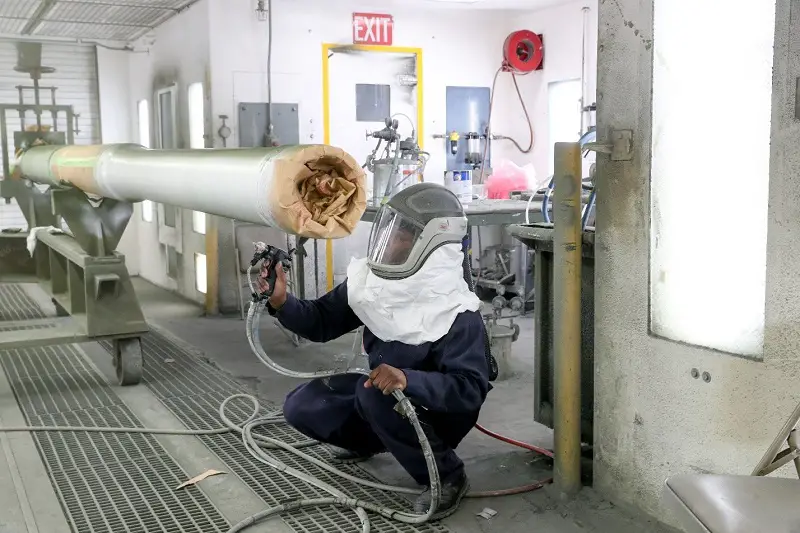Leadership at America’s cannon and mortar factory announced plans to replace the arsenal’s rotary forge and paint booth in the coming years as part of a massive 15-year modernization effort. The new forge and paint booth will increase capacity and quality, and support the trend toward developing longer, more capable artillery and cannons. To say cannon manufacturing is a specialized skill is an understatement; among the specific processes Watervliet Arsenal uses, none is more iconic than the massive rotary forge. Since it was first installed in 1976, Watervliet’s forge has produced thousands of barrels for every long-range direct and indirect-fire cannon system for the U.S. military and its allied nations. Watervliet currently produces cannons for the M109 Paladin self-propelled howitzer, M1 Abrams tank, M777 lightweight howitzer and AC-130 gunship for the U.S. Air Force.
“Anytime we can use engineering controls and practices to not only improve our processes and quality but also reduce risks to our employees, it is a win-win. Removing the human from direct contact with the process allows us to protect the employee’s health without having to replace them with a robot,” said Matthew Church, Watervliet Safety and Environmental Division chief.
These two modernization projects really capture what we are doing at Watervliet Arsenal. This is the front end and back end of cannon production,” said Col. Alain Fisher, Watervliet Arsenal commander. “We are using new technology in our facilities from the moment raw material enters until the final product is loaded and transported to its ultimate destination: America’s Soldiers, Marines and Airmen.”

The idea of replacing aging machines is nothing new at Watervliet; however, the scale and importance of the forge have made the thought of its eventual removal a challenge. All that changed with a renewed interest in long-range precision fires by the U.S. Army and an increase in production since 2019. The answer was simple: To continue fulfilling mission requirements and new capabilities, the rotary forge would need to be replaced. The project addresses facility and garrison infrastructure upgrades and improvements at Watervliet Arsenal to support a new rotary forge. WVA is evaluating and designing infrastructure support for secondary equipment and processes that support forge operations, including power, HVAC, controls, structural and architectural upgrades, security, telecommunications, process flow, hazardous material testing, fire suppression and alarms, construction phasing and logistics support, equipment laydown area evaluation and other support.
Equally important is the finish coating that all cannon and artillery undergo at Watervliet Arsenal — after all, paint protects the underlying steel from harsh weather conditions, improving the lifespan of a cannon. Watervliet leaders are planning a new modern automated paint booth to support longer cannon and increase quality. The new paint booth is not only more technologically advanced, but it is also larger, to accommodate longer cannons and allow more cannons to be painted at a time. The new paint booth includes automation, an upgraded oven, robotic tooling, programmable controls and automatic ambient and climate controls. Supporting this new technology are multiple utility and infrastructure improvements, including HVAC, electrical, fire suppression, gas connections, compressed air, and structural and building repairs.
Once complete, WVA will have the capability to paint the larger and heavier components needed to support Army signature modernization projects. The current paint booth requires protective equipment worn by painters who spray cannons and components by hand. While a skilled painter is effective at this job, automation improves consistency and reduces exposure risks to painters. Construction of the new paint booth will begin in fiscal year 2024. Watervliet Arsenal is an Army-owned and operated manufacturing facility and is the oldest continuously active arsenal in the United States, having begun operations during the War of 1812. Today the arsenal is relied upon by U.S. and allied militaries to produce the highest-tech, highest-powered and most advanced cannons, howitzers and mortar systems.













